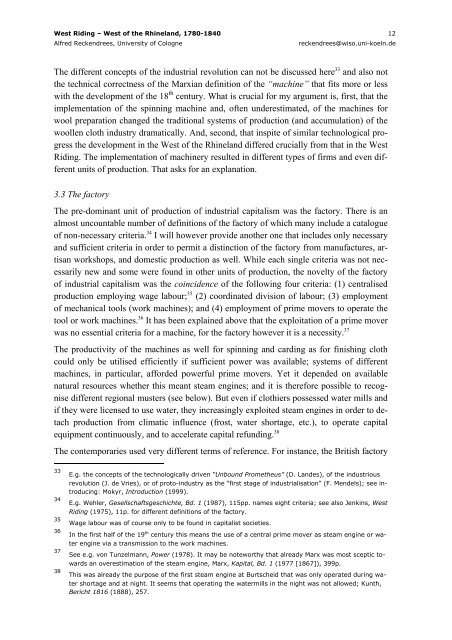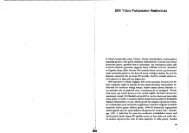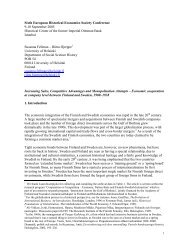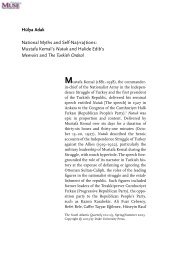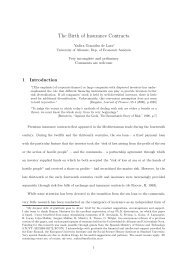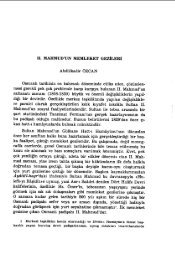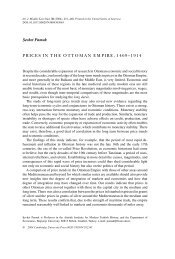West Riding – Western Rhineprovince, 1790-1840: Diverse Paths to ...
West Riding – Western Rhineprovince, 1790-1840: Diverse Paths to ...
West Riding – Western Rhineprovince, 1790-1840: Diverse Paths to ...
Create successful ePaper yourself
Turn your PDF publications into a flip-book with our unique Google optimized e-Paper software.
<strong>West</strong> <strong>Riding</strong> <strong>–</strong> <strong>West</strong> of the Rhineland, 1780-<strong>1840</strong> 12<br />
Alfred Reckendrees, University of Cologne reckendrees@wiso.uni-koeln.de<br />
The different concepts of the industrial revolution can not be discussed here 33 and also not<br />
the technical correctness of the Marxian definition of the “machine” that fits more or less<br />
with the development of the 18 th century. What is crucial for my argument is, first, that the<br />
implementation of the spinning machine and, often underestimated, of the machines for<br />
wool preparation changed the traditional systems of production (and accumulation) of the<br />
woollen cloth industry dramatically. And, second, that inspite of similar technological progress<br />
the development in the <strong>West</strong> of the Rhineland differed crucially from that in the <strong>West</strong><br />
<strong>Riding</strong>. The implementation of machinery resulted in different types of firms and even different<br />
units of production. That asks for an explanation.<br />
3.3 The fac<strong>to</strong>ry<br />
The pre-dominant unit of production of industrial capitalism was the fac<strong>to</strong>ry. There is an<br />
almost uncountable number of definitions of the fac<strong>to</strong>ry of which many include a catalogue<br />
of non-necessary criteria. 34 I will however provide another one that includes only necessary<br />
and sufficient criteria in order <strong>to</strong> permit a distinction of the fac<strong>to</strong>ry from manufactures, artisan<br />
workshops, and domestic production as well. While each single criteria was not necessarily<br />
new and some were found in other units of production, the novelty of the fac<strong>to</strong>ry<br />
of industrial capitalism was the coincidence of the following four criteria: (1) centralised<br />
production employing wage labour; 35 (2) coordinated division of labour; (3) employment<br />
of mechanical <strong>to</strong>ols (work machines); and (4) employment of prime movers <strong>to</strong> operate the<br />
<strong>to</strong>ol or work machines. 36 It has been explained above that the exploitation of a prime mover<br />
was no essential criteria for a machine, for the fac<strong>to</strong>ry however it is a necessity. 37<br />
The productivity of the machines as well for spinning and carding as for finishing cloth<br />
could only be utilised efficiently if sufficient power was available; systems of different<br />
machines, in particular, afforded powerful prime movers. Yet it depended on available<br />
natural resources whether this meant steam engines; and it is therefore possible <strong>to</strong> recognise<br />
different regional musters (see below). But even if clothiers possessed water mills and<br />
if they were licensed <strong>to</strong> use water, they increasingly exploited steam engines in order <strong>to</strong> detach<br />
production from climatic influence (frost, water shortage, etc.), <strong>to</strong> operate capital<br />
equipment continuously, and <strong>to</strong> accelerate capital refunding. 38<br />
The contemporaries used very different terms of reference. For instance, the British fac<strong>to</strong>ry<br />
33<br />
E.g. the concepts of the technologically driven “Unbound Prometheus” (D. Landes), of the industrious<br />
revolution (J. de Vries), or of pro<strong>to</strong>-industry as the “first stage of industrialisation” (F. Mendels); see introducing:<br />
Mokyr, Introduction (1999).<br />
34<br />
E.g. Wehler, Gesellschaftsgeschichte, Bd. 1 (1987), 115pp. names eight criteria; see also Jenkins, <strong>West</strong><br />
<strong>Riding</strong> (1975), 11p. for different definitions of the fac<strong>to</strong>ry.<br />
35<br />
Wage labour was of course only <strong>to</strong> be found in capitalist societies.<br />
36 th<br />
In the first half of the 19 century this means the use of a central prime mover as steam engine or water<br />
engine via a transmission <strong>to</strong> the work machines.<br />
37<br />
See e.g. von Tunzelmann, Power (1978). It may be noteworthy that already Marx was most sceptic <strong>to</strong>wards<br />
an overestimation of the steam engine, Marx, Kapital, Bd. 1 (1977 [1867]), 399p.<br />
38<br />
This was already the purpose of the first steam engine at Burtscheid that was only operated during water<br />
shortage and at night. It seems that operating the watermills in the night was not allowed; Kunth,<br />
Bericht 1816 (1888), 257.


